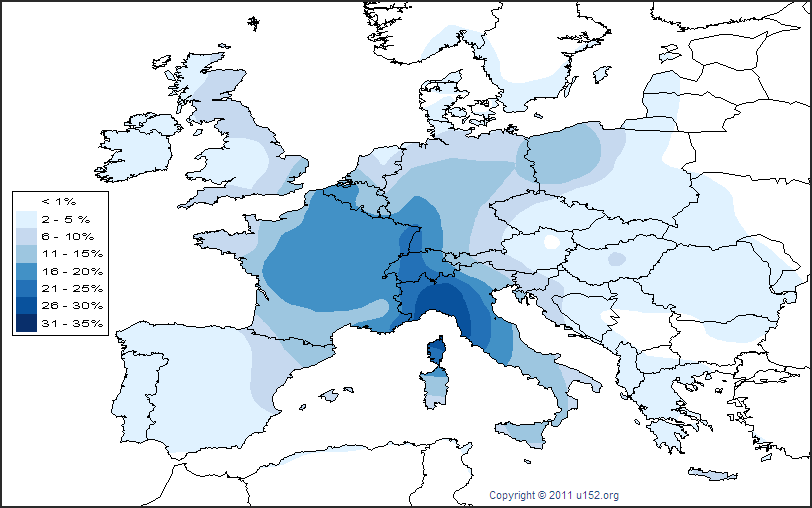The study on ancient Etruscan DNA by Posth et al. 2021 showed that three Etruscan individuals were genetically closer to modern Northwest Europeans. Intrigued I checked their percentage of similarities with modern European populations using Eurogenes K36 and the map tool made by Jerome Hamon.
The dominant components for all three samples are Italian, Iberian, East_Central_Euro and North_Sea (except for CSN002 where North_Sea is replaced by East_Balkans and West_Med).
CAM002 (780-540 BCE, from Campiglia dei Foci, Siena, Tuscany)


This is the oldest sample and it is an excellent match to modern Savoy, but also Switzerland, France, Lombardy and the Baleares.
CSN002 (427-265 BCE, from Casenovole, Grosseto, Tuscany)


No clear modern match for this one, although it is reasonably close to most of Spain, France, North Italy, the Alps, the northern Balkans and Romania, so generally speaking the wider Italo-Celtic world.
VET005(360-200 BCE, from Vetulonia, Grosseto, Tuscany)


I am particularly interested in VET005 as it is my best match on Dodecad K12b so far of any of the thousands of ancient DNA samples available. It makes sense as it is very similar to modern Northern France and West Germany. It is one of the few ancient Etruscan samples that could date from the Roman period, as Etruria was annexed by Rome in the 3rd century BCE and the average age estimate is around 280 BCE, very close to the time of the final conquest of Etruria in 264 BCE.
The dominant components for all three samples are Italian, Iberian, East_Central_Euro and North_Sea (except for CSN002 where North_Sea is replaced by East_Balkans and West_Med).
CAM002 (780-540 BCE, from Campiglia dei Foci, Siena, Tuscany)


This is the oldest sample and it is an excellent match to modern Savoy, but also Switzerland, France, Lombardy and the Baleares.
CSN002 (427-265 BCE, from Casenovole, Grosseto, Tuscany)


No clear modern match for this one, although it is reasonably close to most of Spain, France, North Italy, the Alps, the northern Balkans and Romania, so generally speaking the wider Italo-Celtic world.
VET005(360-200 BCE, from Vetulonia, Grosseto, Tuscany)


I am particularly interested in VET005 as it is my best match on Dodecad K12b so far of any of the thousands of ancient DNA samples available. It makes sense as it is very similar to modern Northern France and West Germany. It is one of the few ancient Etruscan samples that could date from the Roman period, as Etruria was annexed by Rome in the 3rd century BCE and the average age estimate is around 280 BCE, very close to the time of the final conquest of Etruria in 264 BCE.















